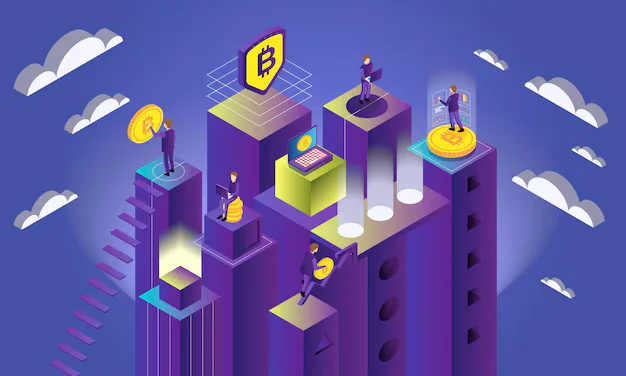The digital economy is rapidly transforming the way we interact with value, ownership, and transactions. At the heart of this transformation lies blockchain technology, a decentralized system that has revolutionized various industries, from finance to supply chains. However, one of the most innovative developments within this ecosystem is the concept of digital representation, enabling the seamless exchange of goods, services, and assets in ways that were unimaginable a few decades ago.
Understanding the Foundations of the Digital Economy
The digital economy is characterized by the use of technology to manage resources and facilitate transactions. Unlike traditional economies, which rely heavily on physical infrastructure and centralized authorities, the digital economy leverages decentralized systems to foster efficiency, security, and accessibility.
At its core, blockchain technology has enabled this shift by introducing a transparent, immutable ledger that records transactions securely. This has paved the way for decentralized applications (dApps), decentralized finance (DeFi), and a wide range of innovations that underpin the digital economy.
Among these, one of the most intriguing innovations is the creation of digital assets that represent value, ownership, or access rights in a digital format. These assets play a critical role in bridging the physical and digital worlds, unlocking new possibilities for ownership, trading, and utility. Investors and businesses should consult with a digital asset attorney to set up online safeguards for their blockchain and digital assets.
A New Way to Represent Value
In the digital economy, representation of value takes many forms. Digital assets can represent ownership of physical items like real estate, art, or precious metals, or they can symbolize access rights to specific services, such as software licenses or memberships.
The ability to tokenize assets has democratized access to markets that were traditionally exclusive. For instance, owning a share of high-value assets like luxury properties or fine art used to be reserved for the wealthy. Tokenization has changed that by allowing assets to be divided into smaller units, enabling fractional ownership that can be easily bought and sold on blockchain-based platforms.
This transformation is not limited to physical assets. Entirely digital products, such as in-game items, intellectual property, or creative works, can also be tokenized, creating new ways for creators and developers to monetize their work.
Real-World Applications of Digital Asset Systems
The applications of digital asset systems extend across various industries. In the real estate sector, tokenization enables property owners to sell fractions of their holdings, opening up investment opportunities to a broader audience.
In the art world, tokenization is being used to sell fractional shares of masterpieces, allowing art enthusiasts to invest in valuable pieces without needing millions of dollars upfront. Additionally, digital art and collectibles, known as non-fungible tokens (NFTs), have gained massive popularity, creating a booming market for creators and collectors.
The financial industry has also seen significant innovation. Traditional securities, such as stocks and bonds, can be digitized and traded on blockchain platforms, reducing costs and increasing accessibility. This has given rise to security tokens, which represent ownership in a company or a share of its profits, providing an alternative to traditional equity models.
Moreover, industries like gaming, entertainment, and supply chain management are leveraging digital assets to enhance user experiences, streamline operations, and foster trust.
Overcoming Challenges and Embracing Innovation
While the potential of digital assets is vast, there are challenges that need to be addressed to ensure their widespread adoption. Regulatory uncertainty remains one of the biggest hurdles. Governments and regulatory bodies are still grappling with how to classify and regulate digital assets, leading to fragmented approaches across different jurisdictions.
Additionally, scalability and security concerns continue to pose challenges. As blockchain networks grow, ensuring they can handle a high volume of transactions while maintaining security and decentralization is critical.
Despite these challenges, the digital economy is on a trajectory of growth and innovation. As the technology matures and regulatory frameworks become clearer, digital assets are expected to become even more integral to the global economy.
The Role of Community and Collaboration
The success of digital asset ecosystems depends heavily on collaboration between stakeholders, including developers, investors, regulators, and users. Open-source communities have played a significant role in driving innovation, creating platforms that are not only robust but also inclusive.
Moreover, public awareness and education are crucial. As more individuals understand the benefits and risks of engaging with digital assets, adoption is likely to increase, driving further growth in the digital economy.
Shaping the Future of the Digital Economy
The digital economy is in its early stages, but its impact is already profound. As technologies like blockchain continue to evolve, we can expect even greater disruption in traditional industries and the emergence of entirely new markets.
Tokens, for example, represent just the beginning of what’s possible in this digital revolution. By enabling the representation and exchange of value in a secure and transparent manner, they are empowering individuals and organizations to participate in the global economy like never before.
As we move forward, the focus will be on building scalable, secure, and inclusive systems that leverage the power of digital assets to create a more connected, efficient, and equitable world.
In conclusion, the digital economy is transforming the way we interact with value and ownership. With innovation at its core, it offers an exciting glimpse into the future of commerce, finance, and technology.







